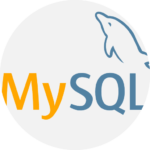Master Java Full Stack Training in Tirunelveli with Getin Technologies!
Ready to kickstart your career as a Java Full Stack developer? Join Getin Technologies in Tirunelveli for our hands on Java Full Stack training in Tirunelveli! Our program is built to help you confidently learn both front-end and back-end development using the latest Java technologies. You’ll get personalized support from expert instructors who’ll guide you through every step. Plus, with flexible learning options and career support, we’ll help you smoothly transition into the job you want. You’ll dive into practical topics like HTML, CSS, JavaScript, Rest API, Java, J2EE, Spring Boot, SQL, and much more. Come join us at Getin Technologies in Tirunelveli and take the first step toward an exciting career in Java Full Stack development!


























 20% Offer for College Students from Total Course Fees.
20% Offer for College Students from Total Course Fees.












